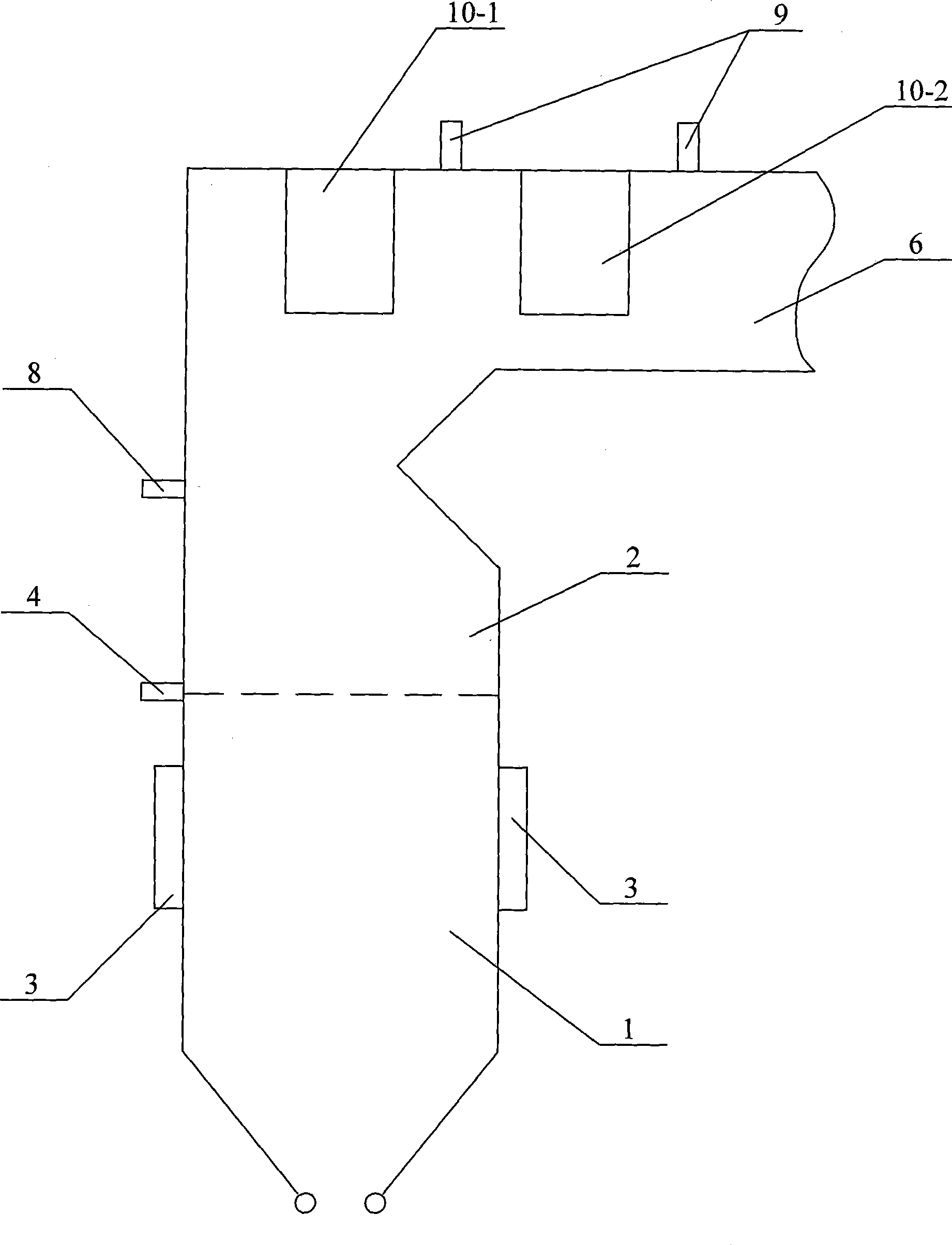Lignite low nitrogen oxide combustion method with dry-type amino reductive delivery
A low-nitrogen oxide, dry-type transportation technology, applied in the direction of combustion methods, solid fuel combustion, chemical instruments and methods, etc., can solve the problems of affecting the thermal efficiency of boilers, huge system investment, and low denitrification efficiency, and achieve simple structure, The effect of high operational reliability and low thermal efficiency
- Summary
- Abstract
- Description
- Claims
- Application Information
AI Technical Summary
Problems solved by technology
Method used
Image
Examples
specific Embodiment approach 1
[0015] Specific implementation mode one: combine figure 1 Explain that the lignite low-NOx combustion method for dry transporting amino reducing agent in this embodiment adopts a boiler that is divided into a main combustion zone 1 and a burnout zone 2 from bottom to top in the furnace, and between the main combustion zone 1 and the burnout zone 2 The burnout air nozzle 4 is the boundary; the amino reducing agent is sprayed into the main combustion zone 1, the burnout zone 2 and the horizontal flue 6 in stages during the lignite combustion process; the excess air coefficient of the main combustion zone 1 is controlled by air distribution to 0.9-1, The excess air ratio in the burnout zone 2 is 1.15 to 1.2; the NH produced by the amino reducing agent injected into the main combustion zone 1 3 The molar ratio of nitrogen oxides in flue gas in main combustion zone 1 is 0.5 to 1.1:1; NH 3 The molar ratio of total nitrogen oxides in the burnout zone 2 and the flue gas in the horizo...
specific Embodiment approach 2
[0020] Embodiment 2: The difference between this embodiment and Embodiment 1 is that the average particle size of the amino reducing agent solid particles injected from the secondary air nozzle and the overburning air nozzle 4 of the burner 3 is 40-60 μm. Other steps and parameters are the same as those in Embodiment 1.
[0021] In this embodiment, the secondary air velocity of the burner 3 is 40-50 m / s; the overburning air velocity is 60-70 m / s.
specific Embodiment approach 3
[0022] Embodiment 3: The difference between this embodiment and Embodiment 1 is that the average particle size of the amino reducing agent solid particles sprayed from the secondary air nozzle and the overburning air nozzle 4 of the burner 3 is 100-150 μm. Other steps and parameters are the same as those in Embodiment 1.
[0023] In this embodiment, the secondary wind speed of the burner 3 is 55 m / s; the wind speed of the overburning wind is 75 m / s.
PUM
 Login to View More
Login to View More Abstract
Description
Claims
Application Information
 Login to View More
Login to View More - R&D
- Intellectual Property
- Life Sciences
- Materials
- Tech Scout
- Unparalleled Data Quality
- Higher Quality Content
- 60% Fewer Hallucinations
Browse by: Latest US Patents, China's latest patents, Technical Efficacy Thesaurus, Application Domain, Technology Topic, Popular Technical Reports.
© 2025 PatSnap. All rights reserved.Legal|Privacy policy|Modern Slavery Act Transparency Statement|Sitemap|About US| Contact US: help@patsnap.com

